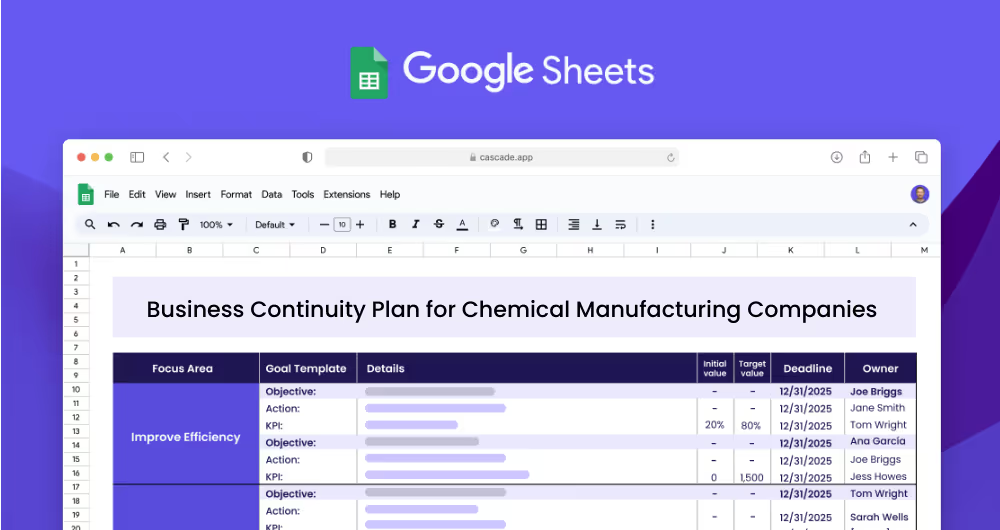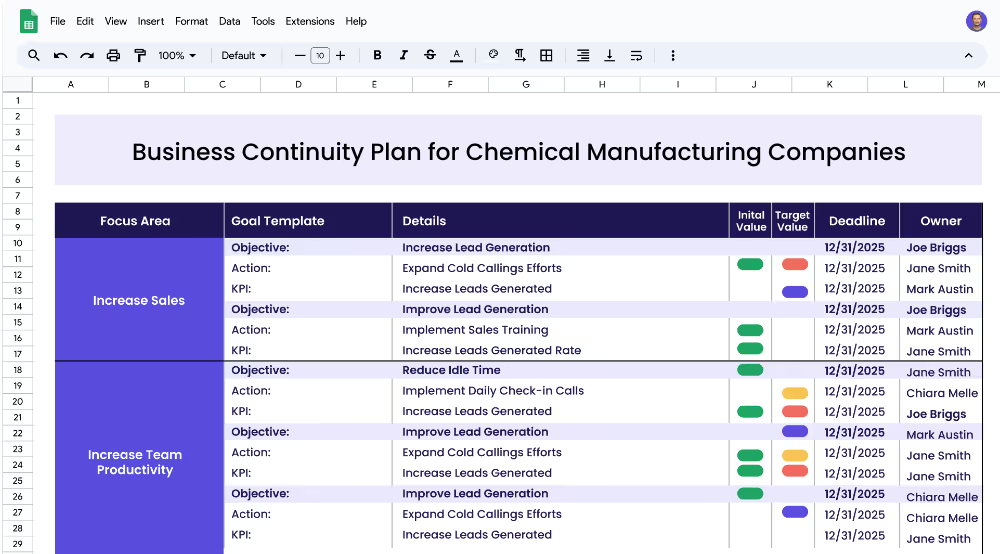A business continuity plan for chemical manufacturing companies is a strategy that outlines the steps to be taken in the event of a disruption. It includes processes and procedures to help ensure safety and compliance with industry regulations. The plan should be comprehensive and include information on potential hazards and risks associated with the production of chemicals, regulatory requirements, and the supply chain dependencies within the industry.
Each focus area has its own objectives, projects, and KPIs to ensure that the strategy is comprehensive and effective.
This business continuity plan template is designed to help chemical manufacturing companies create a comprehensive strategy that addresses potential risks and ensures regulatory compliance. The template provides a framework and structure to develop a plan that can be tailored to each individual company’s specific needs.
Focus areas are the main topics that are addressed in the business continuity plan. For chemical manufacturing companies, some of the focus areas could include risk management, regulatory compliance, and supply chain management. It is important to consider the potential hazards, regulatory requirements, and supply chain dependencies within the industry when developing focus areas.
Objectives are the goals that are associated with each focus area. For example, under the risk management focus area, objectives could include minimizing supply chain disruptions and developing contingency plans. Under the regulatory compliance focus area, objectives could include maintaining regulatory compliance and monitoring regulatory changes. Under the supply chain management focus area, objectives could include optimizing supply chain processes and monitoring supply chain performance.
Key performance indicators (KPIs) are measurable targets that can help track the progress of objectives. They should be specific, measurable, achievable, relevant, and timely. For example, a KPI for the objective to minimize supply chain disruptions could be “Reduce supply chain disruptions” with an initial value of 10 and a target value of 0. Another KPI for the objective to monitor regulatory changes could be “Monitor regulatory changes”.
Projects are actions that need to be completed in order to achieve the KPIs. For example, for the KPI to reduce supply chain disruptions, the related project could be to identify potential disruptions. It is important to ensure that the projects are achievable, measurable, and have a timeframe assigned to them.
If you’re ready to enhance the effectiveness of your strategies and achieve quicker, more substantial outcomes, Cascade Strategy Execution Software is your ideal partner. It transcends traditional spreadsheet utilities, offering a cohesive, powerful platform that boosts real-time updates, centralized project collaboration, and sophisticated reporting capabilities. This seamless integration accelerates the execution of your strategic plans, making it easier for teams to track advancements, adapt promptly to changes and maintain cohesive alignment. Sign-up for free or book a demo with one of our strategy experts to elevate your strategic execution today.


